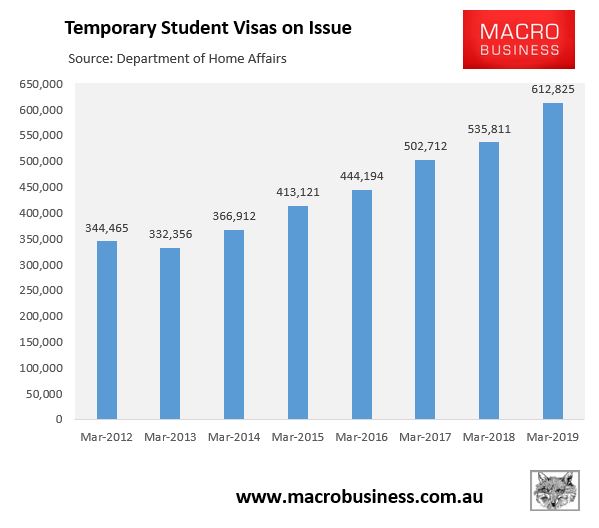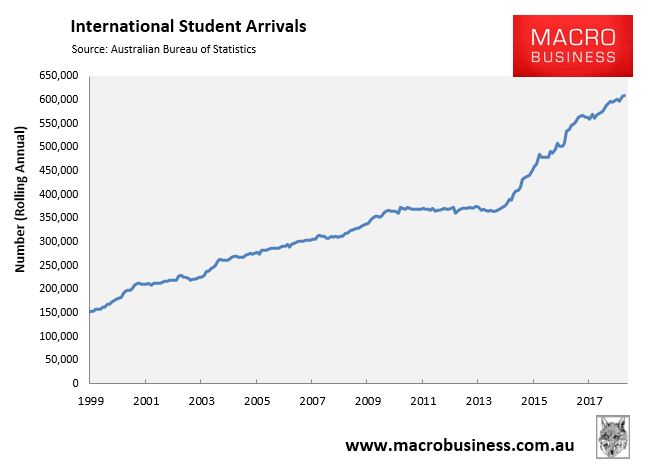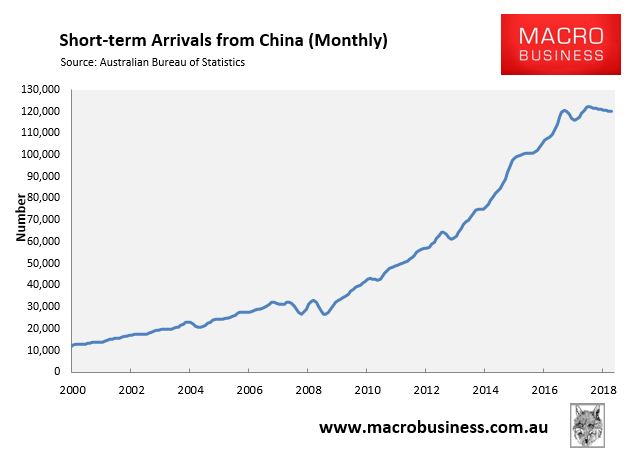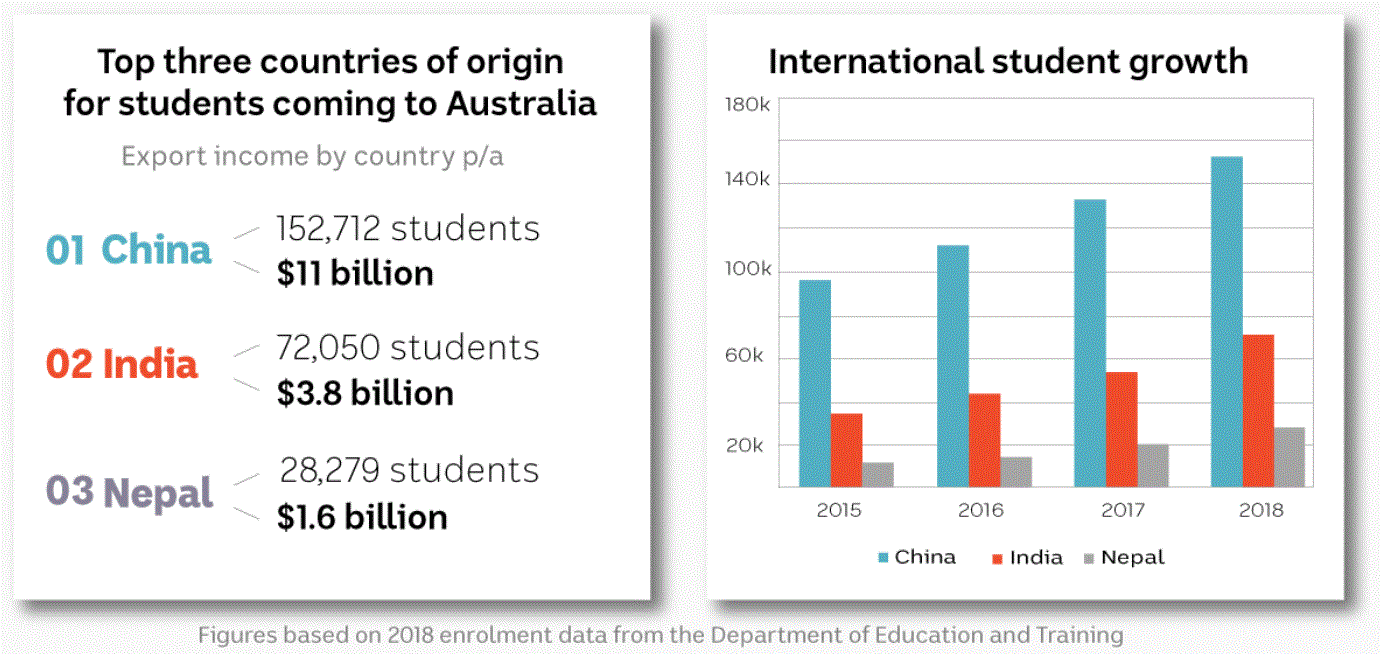The Department of Home Affairs has released its temporary visa statistics for the March quarter of 2019, which reveals that the number of temporary students visas on issue hit an all-time high 613,000, up 77,000 over the year and 280,000 higher than March 2013:

The data is broadly matched by the Australian Bureau of Statistics’ (ABS) short-term student arrivals data, which hit a record high 610,000 in March 2019, up from 367,000 in March 2014:

The data is interesting because earlier this month, The Australian reported that “the highly lucrative six-year boom in Chinese students is over” based on the testimony of a senior Department of Home Affairs official who had briefed Australian universities informing them that visa applications from Chinese students were flat.
This testimony is broadly confirmed by the ABS’ short-term arrivals data, which shows that arrivals from China (albeit from all sources, not just students) have fallen for nine consecutive months and are now at mid-2017 levels:

As revealed in this month’s Four Corners expose on Australia’s international student trade, China is by far Australia’s largest source of international students, followed by India and Nepal (see below graphics).

Therefore, in light of the stagnation in arrivals from China, this suggests that Australia’s universities have pivoted to sourcing students from these nations.
This is potentially problematic. Research from Dr Bob Birrell from the Australian Population Research Institute shows that Chinese students tend to pay higher fees and study at higher quality Group of Eight (GoE) Universities. By contrast, students sourced from India tend to study at cheaper institutions, often for the primary purpose of gaining employment and future permanent residency in Australia.
This month’s Four Corners report was especially critical of the the quality of students coming from the Indian sub-continent, reporting widespread instances of plagiarism, academic misconduct, and students failing their courses.
For example, Dr Duncan Farrow, a maths lecturer and academic misconduct investigator, told Four Corners:
“I have just reviewed the results for students from the Punjab region in BSC100 Building Blocks for Science Students and it is depressing. Of the 52 students in this category, 12 have passed the unit outright — a pass rate of less than 25 per cent”.
Murdoch University’s Professor Benjamin Reilly noted similar:
“In semester one 2018 we experienced a surge in new international students into some postgraduate courses. This surge increased sharply in semester two 2018, with several hundred new students, mostly from the Punjab region of India, enrolling in a small number of postgraduate courses.
“While some were OK, many do not have the language skills to study at a postgraduate level and have thus been unable to participate in class or complete assessments for the units legitimately.
“Hence we now have a much larger number of academic misconduct issues, supplementary assessments and outright failures than we have previously experienced in the units in which this cohort has enrolled”…
Inside Story’s economics correspondent, Tim Colebatch, similarly raised the alarm on the large numbers of lower quality Nepalese students flocking to Australia’s universities:
Deregulation has allowed universities to selectively lower their standards to bring in more fee-paying foreign students, even when they fail to meet the thresholds for English language skills or academic achievement…
This is not the first time immigration from Nepal has surged. A decade ago, we saw a scam with training visas, in which “students” from India and Nepal came for training courses in Australia, then quickly vanished into the workforce. The scam saw net immigration set record levels in 2008–09, before then immigration minister Chris Evans shut it down. But most of those who came stayed on here.
The surge in international students into Australian universities has already unambiguously lowered education standards, as revealed in this month’s Four Corners report (and elsewhere).
And with the pivot towards Indian and Nepalese students – where plagiarism, academic misconduct, and students failing their courses are more common – Australian university standards will be lowered even further in a desperate bid to keep the fees rolling.

